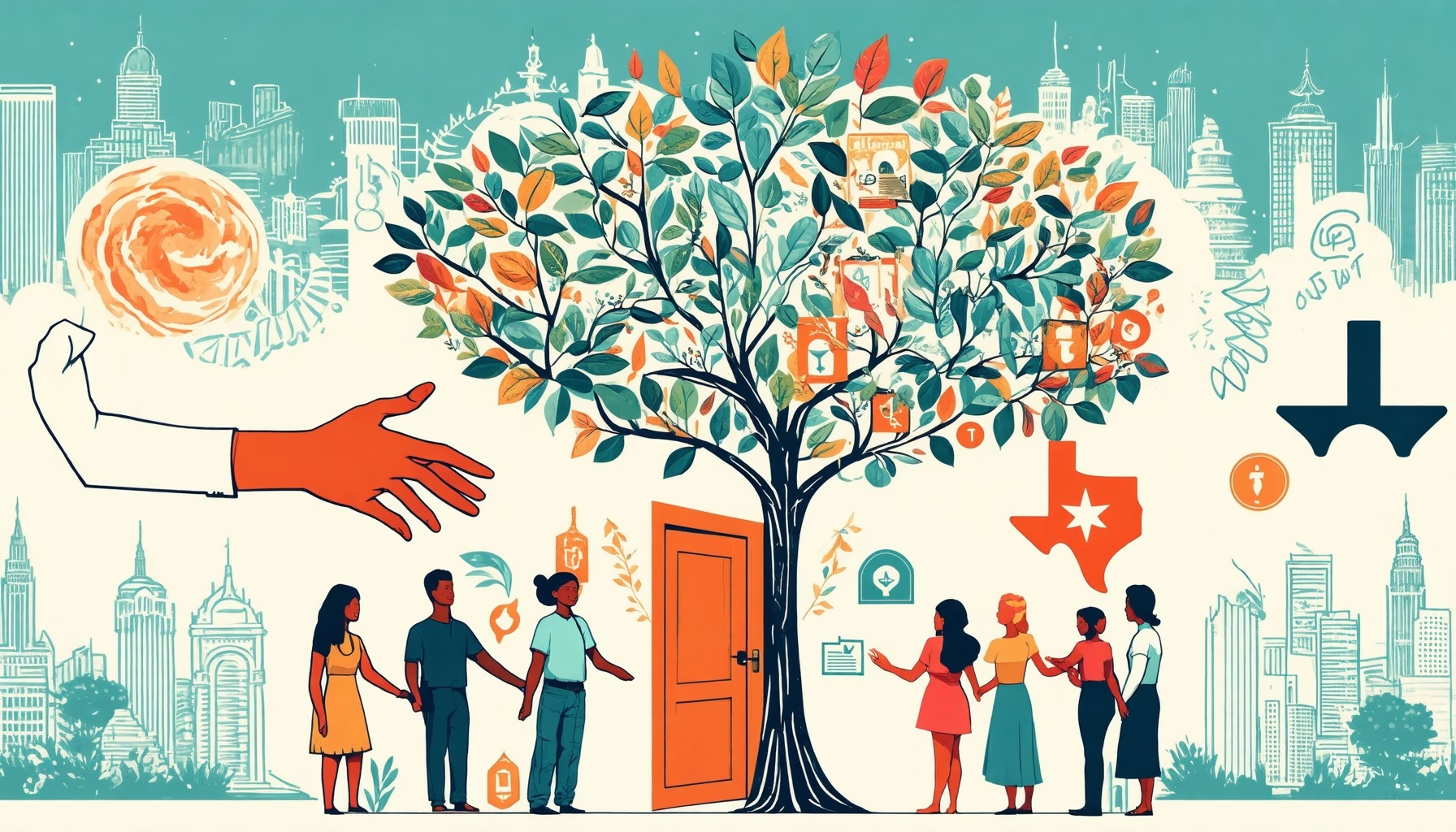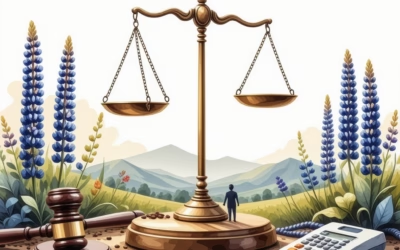Key Takeaways
- Explore government assistance programs to alleviate financial burdens through food aid, housing support, and healthcare access.
- Understand eligibility for financial aid options like TANF, SSI, and EITC that provide crucial support for low-income families.
- Utilize resources like Benefits.gov and local government websites to find tailored assistance in your area.
- Immediate financial aid options include unemployment benefits and stimulus checks for those facing economic hardships.
- Learn how to apply for assistance by gathering necessary documentation and following application processes outlined by various programs.
In today’s challenging economic landscape, many individuals and families are seeking ways to alleviate financial burdens through available resources. This comprehensive guide to government assistance near me is designed to illuminate the various free resources, financial aid, and debt relief programs that can provide much-needed support. From understanding what free stuff you can get from the government to exploring immediate financial aid options, this article will delve into essential topics such as eligibility criteria for financial aid and the major programs that assist low-income individuals. Additionally, we will highlight specific assistance programs available in states like California and Texas, ensuring that you have access to localized resources. Whether you’re asking, How can I get money if I’m struggling? or Do I qualify for any government assistance?, this guide aims to equip you with the knowledge and tools necessary to navigate the complex landscape of government aid effectively. Join us as we uncover the vital information you need to secure the assistance you deserve.
What free stuff can I get from the government?
Government benefits and assistance programs offer a variety of free resources to eligible individuals and families. Here’s a comprehensive overview of what you can access:
Overview of Government Assistance Programs
- Food Assistance: Programs like the Supplemental Nutrition Assistance Program (SNAP) provide financial assistance for purchasing food. According to the USDA, SNAP helps millions of Americans afford nutritious food.
- Health Insurance: The Affordable Care Act (ACA) allows individuals to access free or low-cost health insurance through Medicaid or the Children’s Health Insurance Program (CHIP). These programs are designed to ensure that low-income families receive necessary medical care.
- Housing Assistance: The U.S. Department of Housing and Urban Development (HUD) offers various programs, including public housing and housing choice vouchers, to help low-income individuals secure affordable housing.
- Utility Bill Assistance: The Low Income Home Energy Assistance Program (LIHEAP) helps eligible households with their energy bills, ensuring that families can maintain essential utilities.
- Welfare and Financial Assistance: Temporary Assistance for Needy Families (TANF) provides financial aid to families with children in need, helping them achieve self-sufficiency.
- Social Security Benefits: Social Security provides financial support to retirees, disabled individuals, and survivors of deceased workers. This program is crucial for many Americans in need of financial stability.
- Government Checks and Payments: Various programs offer direct payments to eligible individuals, including unemployment benefits and stimulus checks during economic downturns.
For more detailed information on these programs, you can visit USAGov, which serves as a comprehensive resource for government benefits. Additionally, local government websites often provide specific details on eligibility and application processes.
Types of Free Resources Available
In addition to the programs mentioned above, there are several other free resources available through government assistance:
- Educational Grants and Scholarships: Various federal and state programs provide financial aid for education, including Pell Grants and state-specific scholarships.
- Job Training Programs: The Workforce Innovation and Opportunity Act (WIOA) offers job training and employment services to help individuals gain skills for better job opportunities.
- Legal Aid Services: Many states provide free legal assistance for low-income individuals facing legal issues, ensuring access to justice.
- Transportation Assistance: Some local governments offer free or reduced-cost transportation services for low-income individuals to access jobs and essential services.
These resources are designed to help individuals and families improve their quality of life and achieve financial stability. For more information on accessing these resources, visit Gov Guider’s Financial Assistance Guide.

How can I get money if I’m struggling?
If you’re struggling financially, there are several avenues you can explore to obtain assistance:
- Reach Out to Family and Friends: Personal networks can be a valuable resource. Consider discussing your situation with trusted family members or friends who may be willing to provide temporary financial support or guidance.
- Sell Unwanted Items: Look around your home for items you no longer need or use. Platforms like eBay, Facebook Marketplace, and Craigslist can help you sell these items quickly, providing you with some immediate cash.
- Explore Loan Options: If you have a steady income, consider applying for a personal loan from a bank or credit union. Be mindful of interest rates and repayment terms. Peer-to-peer lending platforms like LendingClub or Prosper can also be options for obtaining funds.
- Credit Card Advances: If you have a credit card, you may be able to take a cash advance. However, be cautious as this often comes with high-interest rates and fees. Ensure you understand the terms before proceeding.
- Request an Advance from Your Employer: If you’re currently employed, consider asking your employer for a paycheck advance. Many companies are open to this arrangement, especially if you explain your situation.
- Government Assistance Programs: Investigate local and federal assistance programs that may be available to you. Websites like Benefits.gov can help you find programs tailored to your needs, such as food assistance, housing support, or unemployment benefits.
- Community Resources: Look for local charities, churches, or non-profit organizations that offer financial assistance or support services. These organizations often have programs designed to help individuals in financial distress.
- Financial Counseling: Consider seeking advice from a financial counselor. Non-profit organizations like the National Foundation for Credit Counseling (NFCC) can provide guidance on budgeting, debt management, and financial planning.
By exploring these options, you can find the support you need during difficult financial times.
Government Cash Assistance Programs Explained
Government cash assistance programs are designed to provide financial support to individuals and families facing economic hardships. These programs can help cover essential expenses such as housing, food, and healthcare. Here are some key programs to consider:
- Temporary Assistance for Needy Families (TANF): This program offers cash assistance to low-income families with children, helping them meet basic needs while promoting self-sufficiency.
- Supplemental Security Income (SSI): SSI provides financial assistance to individuals with disabilities or those aged 65 and older who have limited income and resources.
- Unemployment Insurance: If you’ve lost your job through no fault of your own, you may qualify for unemployment benefits, which provide temporary financial assistance while you search for new employment.
To access these programs, visit USA.gov for more information on eligibility and application processes.
How can I get money from the government right now?
Accessing immediate financial aid from the government can be crucial during times of financial distress. Here are some effective options to consider:
- Unemployment Insurance (UI): If you have lost your job or had your hours reduced due to circumstances like the COVID-19 pandemic, you may qualify for unemployment benefits. These benefits provide cash payments based on your previous earnings. Apply through your state’s unemployment office, and ensure you have your employment history and identification ready.
- Economic Impact Payments (Stimulus Checks): The federal government has issued multiple rounds of stimulus checks to eligible individuals. If you haven’t received your payment, check your eligibility based on your income and tax filing status. You can claim any missed payments by filing your tax return.
- Tax Credits: The Young Child Tax Credit (YCTC) is available for families with qualifying children. To receive this credit, you must file your state income tax return. If you missed filing for previous years, you can amend your tax return to claim the credit retroactively.
- Food Assistance Programs: Programs like the Supplemental Nutrition Assistance Program (SNAP) provide financial assistance for purchasing food. Eligibility is based on income and household size. Apply through your state’s SNAP office.
- Local and State Assistance Programs: Many states and local governments offer emergency financial assistance for rent, utilities, and other essential needs. Check with your local government or community organizations for available resources.
- Grants and Loans: Various federal and state grants are available for individuals facing financial hardship. The Small Business Administration (SBA) also offers loans for those who qualify. Research options that may apply to your situation.
For more detailed information on these programs, visit official government websites such as Benefits.gov or your state’s Department of Social Services. Always ensure you are applying through legitimate channels to avoid scams.
How to Apply for Emergency Assistance
Applying for emergency assistance can be a straightforward process if you follow these steps:
- Gather Necessary Documentation: Before applying, collect all required documents, including identification, proof of income, and any relevant financial statements. This will streamline your application process.
- Visit Official Websites: Go to USA.gov or your state’s government website to find specific programs available in your area. Look for sections dedicated to financial assistance or emergency aid.
- Complete the Application: Fill out the application forms accurately. Ensure that all information is correct to avoid delays. Many applications can be submitted online, but some may require in-person visits.
- Follow Up: After submitting your application, keep track of its status. If you haven’t heard back within a reasonable timeframe, contact the agency to inquire about your application.
- Utilize Local Resources: If you need help navigating the application process, consider reaching out to local non-profits or community organizations that assist individuals in applying for government aid.
By taking these steps, you can effectively access the financial assistance you need during challenging times. For more resources, explore our guide on urgent financial help.
What are the three biggest programs that assist low-income people?
When seeking government assistance near me, it’s essential to understand the three largest programs designed to support low-income individuals and families. These programs provide crucial financial aid and resources to help those in need achieve stability and self-sufficiency.
Overview of Major Government Assistance Programs
The three biggest programs that assist low-income individuals in the United States are:
- Temporary Assistance for Needy Families (TANF): TANF provides financial assistance and support services to low-income families with children. The program aims to help families achieve self-sufficiency through job preparation, work assistance, and child care support. According to the U.S. Department of Health & Human Services, TANF has specific eligibility requirements and offers states flexibility in designing their programs to meet local needs.
- Supplemental Security Income (SSI): SSI is a federal program that provides cash assistance to individuals who are aged, blind, or disabled and have limited income and resources. The Social Security Administration administers this program, ensuring that recipients can meet basic needs for food, clothing, and shelter. As of 2023, the federal benefit rate for SSI is $914 per month for individuals and $1,371 for couples, which can vary by state due to additional state supplements.
- Earned Income Tax Credit (EITC): The EITC is a tax credit designed to benefit low- to moderate-income working individuals and families, particularly those with children. The credit reduces the amount of tax owed and may result in a refund. According to the IRS, for the tax year 2022, the maximum EITC for a family with three or more qualifying children is $6,728, making it a significant financial resource for low-income workers.
Benefits of Each Program for Low-Income Individuals
Each of these programs offers unique benefits that can significantly impact the lives of low-income individuals:
- TANF provides not only financial support but also access to job training and child care, which can help families transition to self-sufficiency.
- SSI ensures that vulnerable populations, such as the elderly and disabled, receive a steady income to cover essential living expenses.
- EITC incentivizes work by providing a financial boost to low-income earners, which can help lift families out of poverty during tax season.
Understanding these programs is crucial for anyone searching for government assistance programs and seeking to improve their financial situation. For more information on how to access these resources, consider exploring additional guides on financial assistance and support services.

What government deals with money?
The primary government entity that deals with money in the United States is the U.S. Department of the Treasury. This department is responsible for managing federal finances, including the issuance of currency, the collection of taxes, and the management of government accounts and public debt. Understanding the role of this agency is crucial for anyone seeking government assistance near me, as it directly impacts various financial aid programs.
Key Government Agencies Providing Financial Assistance
In addition to the U.S. Department of the Treasury, several other agencies play vital roles in providing financial assistance:
- Social Security Administration (SSA): This agency administers social security benefits, including retirement, disability, and survivor benefits, which are essential for many low-income individuals.
- Department of Housing and Urban Development (HUD): HUD offers various programs aimed at providing affordable housing and financial assistance for housing-related costs.
- Department of Health and Human Services (HHS): HHS oversees programs that provide financial aid for healthcare, including Medicaid and the Children’s Health Insurance Program (CHIP).
- Internal Revenue Service (IRS): As part of the Treasury, the IRS not only collects taxes but also administers tax credits and refunds that can provide immediate financial relief.
How to Navigate Government Resources for Financial Help
Navigating government resources for financial help can seem daunting, but there are several steps you can take to simplify the process:
- Research Available Programs: Start by exploring the various assistance programs offered by the agencies mentioned above. Websites like Benefits.gov can help you find programs that match your needs.
- Check Eligibility Requirements: Each program has specific eligibility criteria. Make sure to review these requirements carefully to determine which programs you qualify for.
- Gather Necessary Documentation: Prepare the required documents, such as identification, income statements, and any other relevant paperwork, to streamline your application process.
- Apply Online or In-Person: Many programs allow for online applications, making it easier to submit your request for assistance. If you prefer, you can also visit local offices for in-person help.
Are there any government debt relief programs?
When facing overwhelming debt, many individuals seek assistance through government programs designed to alleviate financial burdens. While there are no specific government-sponsored programs that directly eliminate credit card debt, several federal and state initiatives can provide relief for individuals struggling with debt. Here are some key options to consider:
Overview of Debt Relief Options Available
- Debt Management Plans (DMPs): Non-profit credit counseling agencies often offer DMPs, which can help consolidate your credit card debt into a single monthly payment. These agencies may negotiate lower interest rates with creditors on your behalf.
- Bankruptcy: Filing for bankruptcy can provide a fresh start for individuals overwhelmed by debt. Chapter 7 bankruptcy can discharge unsecured debts, including credit card debt, while Chapter 13 allows for a repayment plan over three to five years. It’s crucial to consult with a bankruptcy attorney to understand the implications.
- Federal Student Loan Forgiveness: For those with federal student loans, programs like Public Service Loan Forgiveness (PSLF) can provide relief after a certain number of qualifying payments. While not directly related to credit card debt, reducing student loan burdens can free up funds for other debts.
- State-Specific Programs: Some states offer their own debt relief programs or financial assistance initiatives. It’s advisable to check with your state’s financial regulatory agency for available resources.
- Consumer Financial Protection Bureau (CFPB): The CFPB provides resources and guidance on managing debt, including information on how to avoid scams and find legitimate help. Their website offers tools to help consumers understand their rights and options.
- Gov Guider: While not a debt relief program, Gov Guider can assist individuals in navigating government resources and understanding their financial options. It can be a helpful tool for finding local assistance programs.
How to Qualify for Government Debt Relief Programs
Qualifying for government debt relief programs typically involves meeting specific criteria, which can vary by program. Here are some general steps to consider:
- Assess Your Financial Situation: Gather information about your income, expenses, and total debt to understand your financial health.
- Research Available Programs: Look into federal and state programs that may offer assistance. Websites like Benefits.gov can provide valuable information on available resources.
- Consult with a Credit Counselor: A certified credit counselor can help you evaluate your options and guide you through the application process for DMPs or other relief programs.
- Check Eligibility Requirements: Each program will have specific eligibility criteria, such as income limits or types of debt covered. Ensure you meet these requirements before applying.
- Stay Informed: Keep up-to-date with changes in debt relief programs and regulations, as these can affect your eligibility and options.
For more information on managing credit card debt and exploring available options, visit the Consumer Financial Protection Bureau’s website. Always ensure that any program or service you consider is legitimate and reputable to avoid scams.
Do I qualify for any government assistance?
Determining your eligibility for government assistance can be a straightforward process if you follow the right steps. Various programs exist to support individuals and families in need, and understanding the criteria can help you access the resources available to you.
Steps to Determine Eligibility for Assistance
To assess your eligibility for government assistance, consider the following steps:
- Identify the Assistance Programs: Research the different types of government assistance programs available, such as food assistance, cash aid, housing support, and healthcare services. Websites like Benefits.gov provide comprehensive listings of programs based on your state and needs.
- Review Eligibility Criteria: Each program has specific eligibility requirements, often based on income, family size, and residency. For example, programs like SNAP (Supplemental Nutrition Assistance Program) have income limits that vary by household size.
- Gather Necessary Documentation: Prepare documents that may be required for your application, such as proof of income, identification, and residency. This documentation will help streamline the application process.
- Utilize Online Tools: Many states offer online eligibility calculators that can help you determine if you qualify for specific programs. These tools can provide immediate feedback based on your input.
Resources for Finding Local Government Assistance Near Me
Finding local government assistance resources is crucial for accessing the help you need. Here are some effective ways to locate assistance near you:
- Visit Local Government Websites: Check your state or county’s official website for information on available assistance programs. These sites often have dedicated sections for residents seeking help.
- Contact Local Nonprofits: Organizations such as the United Way or local food banks can provide information on government assistance programs and may offer additional support services.
- Use Online Directories: Websites like USA.gov can help you find government services based on your location. You can search for assistance programs tailored to your needs.
- Consult Community Centers: Local community centers often have resources and staff available to assist you in navigating government assistance options.




